In Cairo, the inauguration of the Grand Egyptian Museum (GEM) announced for autumn 2020, will have to wait a little longer. To wait, Egypt offers some virtual tours of sites, all the access links to which are given in this article. All you have to do is click.
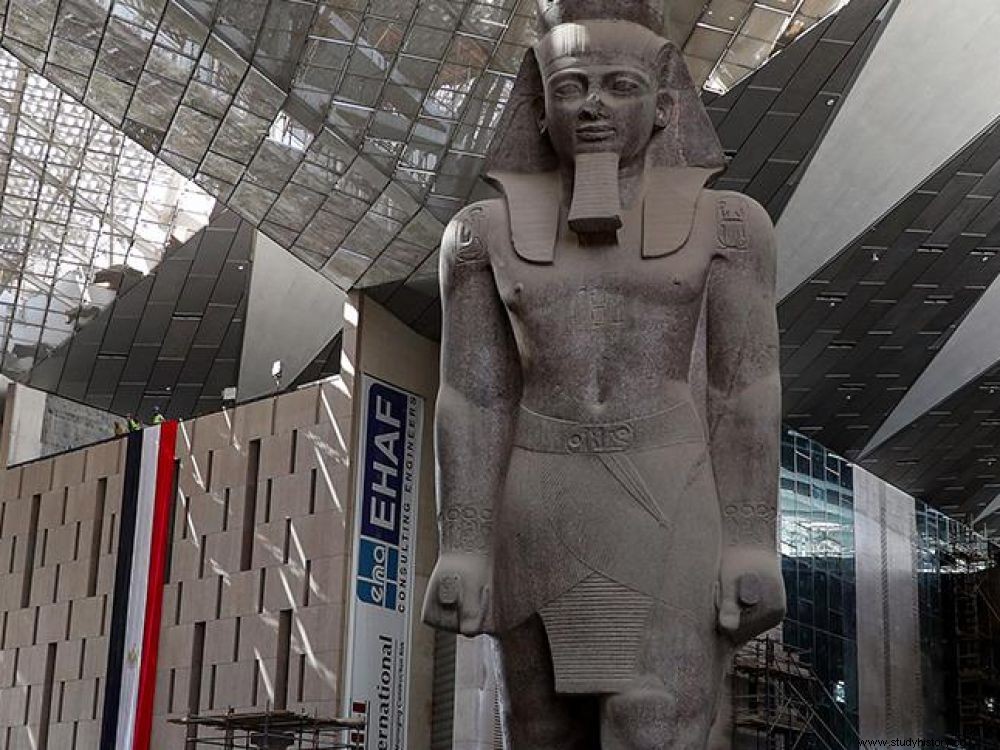
The Grand Egyptian Museum (GEM), near Cairo, which was originally scheduled to open in 2015, then in 2018 and in 2020 will finally be inaugurated in 2021.
Damage collateral of the Covid-19 pandemic, the planned opening in autumn 2020 of the Grand Egyptian Museum (GEM), in Cairo, a postponed to 2021 at the express request of President Abdelfatah al-Sissi. Already shaken in recent years by multiple crises – in particular acts of terrorism targeting tourists – Egypt is the country most affected by the coronavirus on the African continent with nearly 2,000 declared cases and more than a hundred deaths. , knowing that these figures are probably underestimated. The authorities had to resolve, like many countries, to close some of the businesses as well as all the historical monuments - including the famous pyramids - and also suspend all air services.
The GEM, located on the Giza plateau, 2 km north of the famous pyramids, will be with 490,000 m 2 the country's largest museum and the new residence of Pharaoh Tutankhamun. Indeed, it is in this immense case of concrete, glass and steel that will be presented to the public for the first time, among 100,000 objects covering 5,000 years of history, the entire royal treasure of the child-king. , more than 5,000 pieces! The new date of inauguration of this extraordinary museum has not been communicated to date.
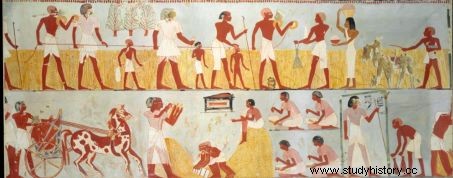
Decor of the Tomb of Menna, one of the most beautiful tombs of the Theban necropolis, in Egypt. © Egyptian Ministry of Antiquities
Extraordinary visits to ancient sites from home
Only virtual tours of the ancient monuments of Egypt are now possible, as announced by the Ministry of Egyptian Antiquities in collaboration with the Giza Project of Harvard University (Cambridge, United States), which regularly seeks to enrich its proposals. in these times of confinement. It is thus possible to enter the tomb of Menna in Luxor (TT69), one of the most beautiful hypogeums of the XVIII th dynasty of the Theban necropolis, or to discover the tomb of Queen Meresankh III, a mastaba of the V th dynasty, located on the Giza plateau, in the shadow of the famous pyramid of Cheops, the sovereign's grandfather.
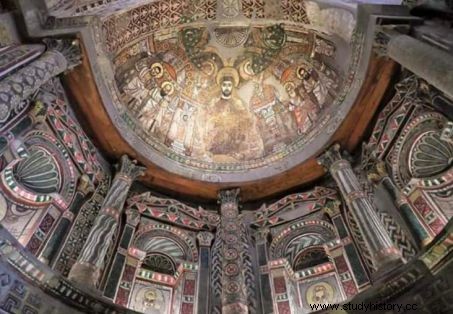
The Red Monastery near Sohag (Upper Egypt), owes its name to its brick architecture. The church was decorated in the 5 th century. The last painting restoration campaign (2000-2015) was carried out by an Italian team. © Egyptian Ministry of Antiquities
The virtual tourist can also visit the Coptic monastery of Sohag (Upper Egypt), better known as the Red Monastery, founded in the 4 th century, as well as that of the Ben Ezra Synagogue, the oldest in Egypt, or the medieval complex of the mosque and madrasa of Sultan Barquq (14 e century) in Old Cairo.
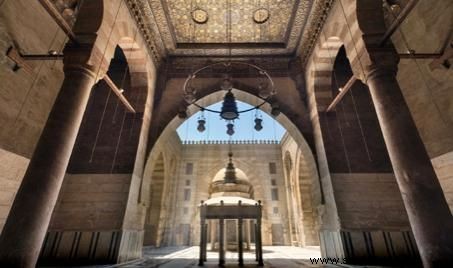
The Sultan Barquq Mosque-Madrassa, in the historic medieval quarter of Old Cairo. © Egyptian Ministry of Antiquities
The Greco-Roman catacombs of Kom El Shoqafa, Alexandria, can also be surveyed via computer, where following a spiral staircase leading about 20 meters underground one can discover sarcophagi decorated with raised garlands of leaves vines, bunches of grapes and heads of jellyfish, as well as loculi (funerary niches) where the urns containing the cremated remains of the inhabitants of the 2 e were once placed century.
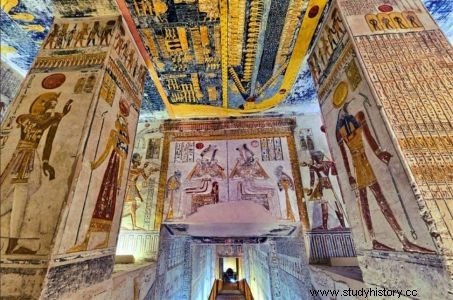
Entrance to the tomb of Pharaoh Ramses VI, in the Valley of the Kings, near Luxor, a burial with a rich ornamental program. © Egyptian Ministry of Antiquities
Without forgetting the exploration of the tomb of Ramses VI (1137 BC), in the Valley of the Kings, near Luxor. In 1922, the study of his burial, due to its proximity, had led to the discovery of the extraordinary tomb of Tutankhamun by Howard Carter.
